Hazrat Shahjalal International Airport, Dhaka is Bangladesh’s prime airport, handling around 70% of both domestic and international air traffic of the country according to 2017 estimates, which might have increased by now. The soft launch of the 3rd terminal of the airport with increased capacity alone can neither make drastic improvement, nor is that the only development planned. The larger ‘Dhaka International Airport Expansion Project’ was approved in late 2017 by the Executive Committee of the National Economic Council (ECNEC) which is supposed to materialize in two phases. The third terminal is a part of the phase 1 of the expansion project. What other development is planned for the airport? Why is that even necessary?
The HSI Airport was initially constructed in 1941 during World War II, not as an airport, rather as a spare airstrip in Kurmitola, near the existing Tejgaon airstrip to operate warplanes towards the warfields of Kohima and Assam. After the partition of India and subsequent birth of East Pakistan (currently Bangladesh) in 1947, the Tejgaon airstrip was turned into a commercial airport, the first of its kind in the then East Pakistan. During the Indo-Pak war of 1965, Indian Air Force bombed the Kurmitola Airstrip, assuming it to be the Tejgaon Airstrip. Later in 1966, the then Pakistan government planned to reconstruct the Kurmitola airstrip with the construction of a terminal and an adjacent railway station. However, due to Pakistan’s subjugation of Bengali and their refusal to hand over power to the elected representative, Bangabandhu Sheikh Mujibur Rahman, the Liberation War of Bangladesh took place in 1971 and Bangladesh was born as a war-torn country. The Kurmitola airstrip was damaged during the war. Subsequent governments of Bangladesh decided to turn it into the prime airport of the country. During its establishment as the prime airport of the country, Hazrat Shahjalal International Airport (HSI Airport) had a capacity of handling 8 million passengers per year which is the same till date. However, air traffic has increased many folds over the years, mandating an expansion of the airport.
Increasing Traffic
Bangladesh’s air traffic had an unforeseen increase over the last decade. Although HSIA saw an average annual passenger growth rate of 6.17% from 1999 to 2015, the growth rate after 2006 jumped to 7.88%, indicating a significant rise in demand in recent years. In HSIA, the international passenger ratio was 77.2% in 1999. However, the ratio has risen steadily in subsequent years, reaching around 90% of all passengers by 2011.
Given that HSI Airport currently has a maximum capacity of handling 8 million passengers, according to International Civil Aviation Organization (ICAO) estimates (which includes assumptions regarding passengers carried by non-reporting airlines, hence can be less than the actual figures), in 2019, Bangladesh’s total number of air passengers stood at 6.2 million before COVID-19 and worldwide travel restrictions. According to the Civil Aviation Authority of Bangladesh (CAAB)’s master plan, the number of air passengers is projected to reach up to 13.5 million in 2025. A study conducted by JICA in March, 2017 estimated the 2025 air passenger number to reach 14.1 million passengers. Even though COVID has disrupted the rise of the number of air passengers, it’s still important to note that we are soon to exhaust HSI Airport’s passenger handling capacity of 8 million passengers per year.
Air Traffic, Passengers Carried (Bangladesh)
Source: ICAO and World Bank
No Data Found
On the other hand, during the Holy Hajj season when thousands of passengers travel to Saudi Arabia from Bangladesh, there is an increased seasonal demand. Hence the pressure of passengers is not uniform all over the year, it has periodic ups and downs – exposing the HSI Airport to its maximum capacity at times and causing passengers to suffer.
The number of passengers has a lot to do with the number of terminals and boarding bridges. The HSI Airport’s boarding bridges and belts as well as the overall capacity of the existing terminals are insufficient to ensure service according to the increasing demand. There are only 8 boarding bridges and belts, which are inadequate to serve the 350 flights on average everyday, which is supposed to increase to 420 flights a day in 2025 according to JICA estimates. Hourly air traffic during peak hours in 2015 was 27 aircrafts per hour, which is supposed to increase to 47 aircrafts in 2025 according to JICA estimates. It is no longer possible to allow HSI Airport’s peak air traffic to operate smoothly without any delay with the existing 8 boarding bridges and belts. The insufficiency of boarding bridges caused severe delay during eid season in 2018 and is often the reason for delay in peak season. On the other hand, the existing terminals 1 and 2 have already reached the maximum number of boarding bridges. Therefore, a third terminal has become necessary for the HSI Airport.
Increasing Cargo Handling
Previously, Bangladesh was not a major exporter or importer. But following the economic liberalization, Bangladesh is currently the second largest RMG exporter in the world. That has increased the country’s reliance on air freight in the last decade. In 2015, Bangladesh handled about 260 thousand tonnes of international and local freight combined. According to JICA’s projection, it is supposed to reach 600 thousand tonnes by 2025 and 1 million tonnes in 2035. But HSI Airport only has a capacity to handle 200 thousand tonnes of cargo at this point.
- Current Cargo Handling Capacity200 Thousand Tonnes
- Additional Cargo Handling Capacity500 Thousand Tonnes
Planning and Construction
For the Dhaka International Airport Expansion Project, the CAAB carried out the “Master Plan and Feasibility Study, Construction of Second Runway and Other Infrastructure Development Works at Hazrat Shahjalal International Airport” in February 2015. The joint-venture of Yooshin Engineering, CPG Corporation (Singapore), and Development Design Consultants was appointed as a consultant firm in 2014 after performing a feasibility study of the project. The three-storey third terminal building was designed by Rohani Baharin of internationally renowned CPG Corporation (Private) Limited Singapore. A partnership made up of three of Asia’s top construction companies—the South Korean behemoth Samsung C&T Corporation (“Construction & Trading Corporation”), Japan’s Mitsubishi Heavy Industries, and Fujita Corporation—won the extremely competitive contract for the building of HSIA Terminal 3. The construction of terminal 3 finally commenced on 28 December 2019.
Rapid Exit Taxiway to Decrease Delay
The number of aircraft movements at HSI Airport exhibited a rise from 56,000 movements per year in 2010 and 2011 to 73,000 movements per year in 2015. According to CAAB estimates it is supposed to reach 117,000 in 2025. With only one runway as HSI Airport, the San Diego International Airport handles 500 flights every day. It has been possible due to having a rapid exit taxiway.
Not all aircrafts take the same length of runway. Smaller aircrafts can fly from shorter runways and control speed after landing within a shorter time. Most modern aircrafts like Boeing 777, 787 and Airbus A350, A320 require a minimum runway length of 2500 m, where HSI Airport has a runway 3500 m long. Rapid exit taxiways allow planes to exit the runway and clear it for the next aircraft earlier. HSI Airport will have 2 rapid exit taxiways as part of the expansion project.
More Baggage Belt and Boarding Bridge
Currently, HSI Airport has a total of 8 boarding bridges and conveyor belts. Boarding bridges allow passengers to get down from an aircraft safely or board an aircraft. Having 8 boarding bridges is barely enough for the traffic HSI Airport has to serve, especially during peak hours. The expansion project has a total of 26 boarding bridges planned, of which 12 will be in operation from the date of the soft launch. The other boarding bridges will be constructed during the 2nd phase. Along with the boarding bridges, Dhaka has an inadequate number of conveyor belts to handle the baggage of the passengers, only 8 belts at this point. The third terminal will have a total of 16 conveyor belts to allow passengers to find their baggage easily.
Check-in and Immigration Counter
Dhaka Airport currently has only 56 check-in counters, which will be increased to 115 including 15 self-service check-in counters where passengers will be able to check in without the help of any official, all by themselves. On the other hand, the airport has inadequate immigration counters, often causing long queues at immigration. The third terminal will have 66 departure immigration counters, including 10 automatic passport control counters and 59 arrival immigration desks including 5 e-gates through which Bangladeshi passport holders can enter the country without any contact with immigration officers.
But a major consideration in terms of automation is that after implementation of e-passports in Bangladesh, a few e-gates were created in the existing terminals. However, they have often been inoperable. Therefore, the new e-gates and automated passport control counters have to be maintained carefully.
More Parking Space for Both Planes and Cars
The HSI Airport currently has approximately 29 parking slots in the parking aprons. The number of planes that can be parked depends on the size of the aircrafts. Terminal 3 will provide an additional 5,42,000 square meters parking apron, which can enable the airport to park around 37-42 aircrafts more than its current capacity. However, right after the soft launch, the airport will be able to park 8-10 more aircrafts.
On the other hand, the current car parking of the airport has a maximum capacity of 1000 cars, with the new parking in terminal 3, an additional 1250 cars will be able to park in the airport.
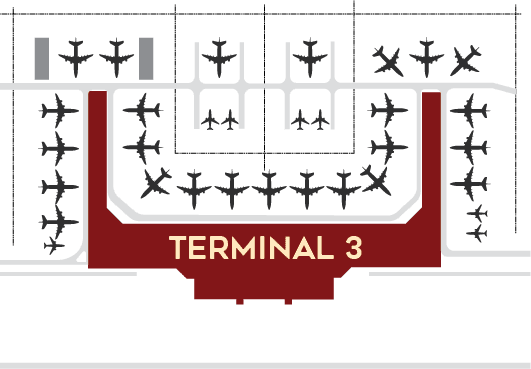
Amenities for Inclusion and Ease
The Dhaka Elevated Motorway and the metro rail will both have easy access to the airport. It will also contain 14 duty-free shops, Wi-Fi access, and mobile charging stations, as well as movie lounges and food courts created to improve the passenger experience. There will be separate prayer spaces for men and women. a designated “meeters and greeters plaza” that makes it easier to welcome guests.
Additionally, it will include a designated nursing area, diaper-changing stations, and a large family bathroom. There will also be a kids’ play area with sleeper swings for the enjoyment of little visitors. At the new terminal, passengers will have access to 24-hour medical care, including doctor-staffed health inspection services, first-aid rooms for urgent medical attention, testing facilities, and isolation sections.
The Cargo Complex - Leveraging Agricultural Exports
Bangladesh exported a record 1.24 lakh tonnes of fresh vegetables and fruits in FY 2013-14, the highest ever. But it has eventually declined in the following years. HSI Airport only has an annual cargo handling capacity of 2 lakh tonnes. On the other hand, the airport has no cold-storage facilities of its own and no dedicated cargo complex. Exporters have to store their products in Bangladesh Agricultural Development Corporation (BADC)’s 400 square meter cold storage facility, adjacent to the airport. Even then, exported fruits and vegetables, other perishable goods have to be kept in the open air for 6-8 hours before they can be boarded. Therefore, cargo complexes with separate import and export facilities are being constructed as part of the expansion project, which includes a 3-storied cold storage with a floor space of 396 square meters.
Over 2,73,470 tonnes of cargo will be able to be discharged annually from the terminal’s 27,000 square meter Import Cargo Village, while over 5,47,47,941 tonnes will be able to be discharged annually from the terminal’s 36,000 square meter Export Cargo Complex. Modern equipment will also make it feasible to speed up the import-export clearance of commodities. Imported and exported products can be stored at the airport if necessary, and the air-conditioned warehouses prevent perishable items from rotting even if they are held for a long time. The new terminal will feature two separate cargo villages for export and import. Once the new terminal is running, both the cargo handling and export processes will be easier to handle and take less time to complete.
Implementational Challenge - Budget Overrun
This ambitious, yet essential project has an approximate cost of BDT 21,398 crore, of which the Japan International Cooperation Agency (JICA) is providing a long amounting BDT 16,141 crore and the Government of Bangladesh is bearing the remaining BDT 5,257 crore. The Executive Committee of the National Economic Council (ECNEC) approved the project in October 2017 worth Tk 13,610 crore initially. The projected cost has risen due to the inclusion of the separate cargo village and a VVIP terminal that were not part of the project initially. On the other hand, firefighting equipment of the airport will be completely renewed for increased safety, which was not part of the initial budget as well.
The soft opening was scheduled to take place within 1,471 days of the beginning of the construction work, but has been completed in just 1,245 days, according to the officials. The airport did not have to acquire additional land for the construction. Hence, it brings forward a question that has to be answered academically with enough evidence: are projects without land acquisition taking less time to be implemented? The policymakers can give it a thought.
What is in Phase 2?
- The entire part of the 3rd terminal will be constructed
- An additional runway will be constructed
- The existing runway will be widened and extended
- The existing two terminals will be upgraded and extensively renovated
The additional runway will be able to ease HSI Airport’s air traffic congestion to some extent. Even though due to insufficient space, the two runways cannot run simultaneously. But the smaller second runway can allow smaller planes to take off without taxing to the main runway and ease pressure on that.
The Proposed Bangabandhu International Airport - A New Airport Altogether?
With the expansion of HSI Airport, there will be no spare space left in the airport to expand, meaning that it’s reaching maximum utilization of space with the expansion of the airport. The expansion however, will only allow the airport to serve its ever-increasing passengers until 2035 with ease. After 2035, according to CAAB and JICA’s estimates, HSI too is supposed to be over-burdened with the pressure of cargo and passengers.
The Government of Bangladesh is planning to construct Bangabandhu International Airport within close proximity of Dhaka, but outside the city. Suitable locations such as Bhanga of Faridpur district and Sirajdikhan of Munshiganj district have been considered. It is worth mentioning that, back in 2013, GoB was planning to establish a new airport rather than expanding the existing HSI Airport. However, the government finally decided to move forward with the expansion instead of a new airport, since it will provide some breathing space for the government before construction of another airport becomes unavoidable.
About the Author

Najib Hayder is the Blog Manager at The Confluence. Formerly he has served as the Head of Policy Debate at Youth Policy Forum. A former debater, business graduate by chance and policy-enthusiast by choice.
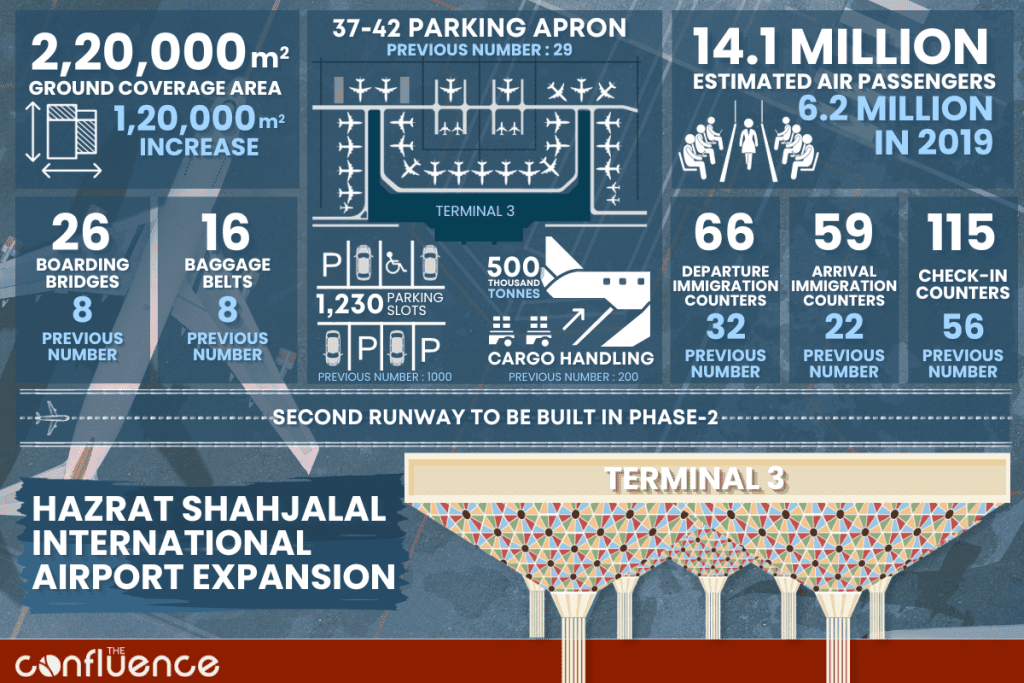
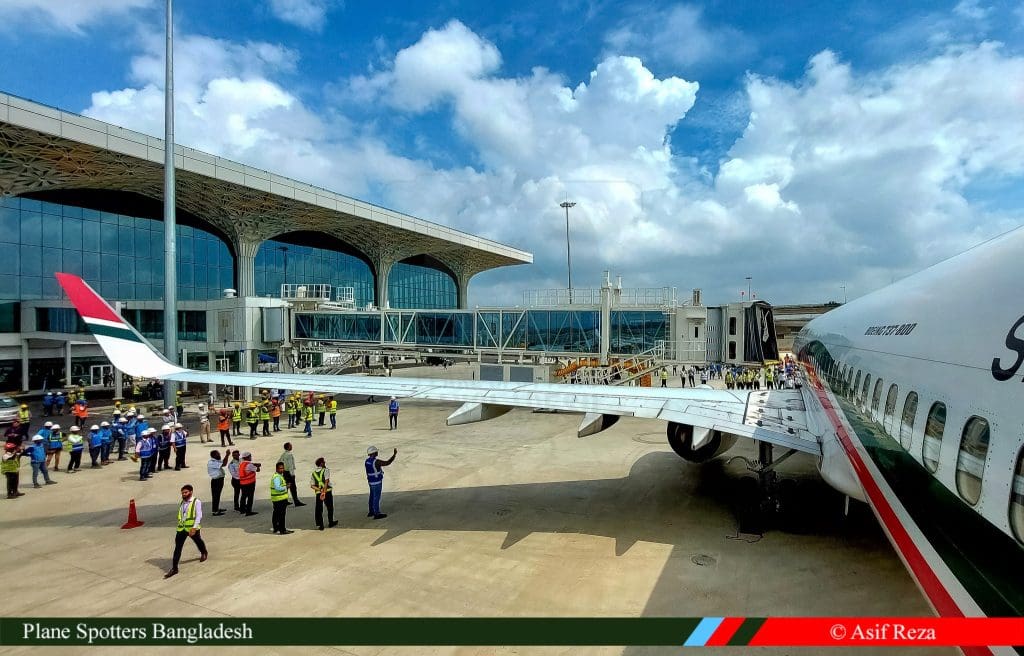
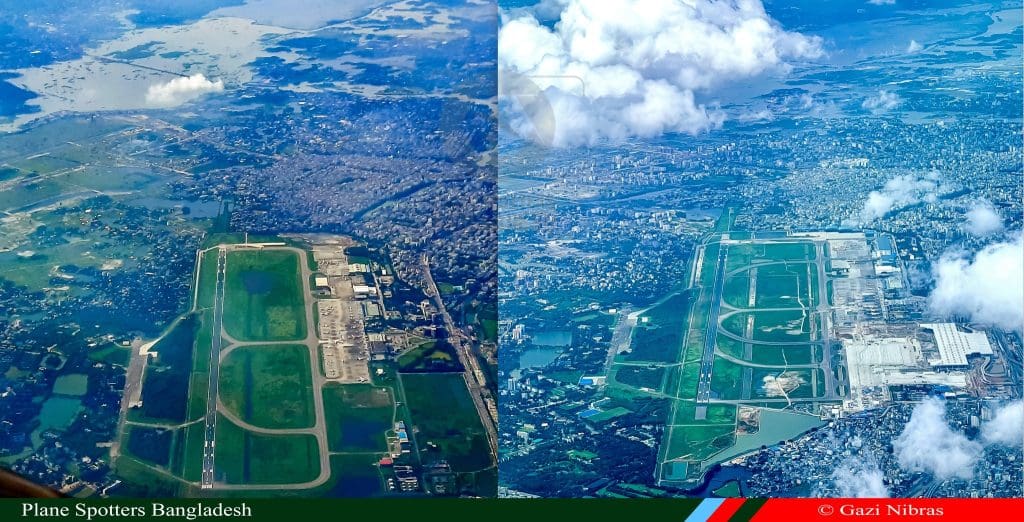
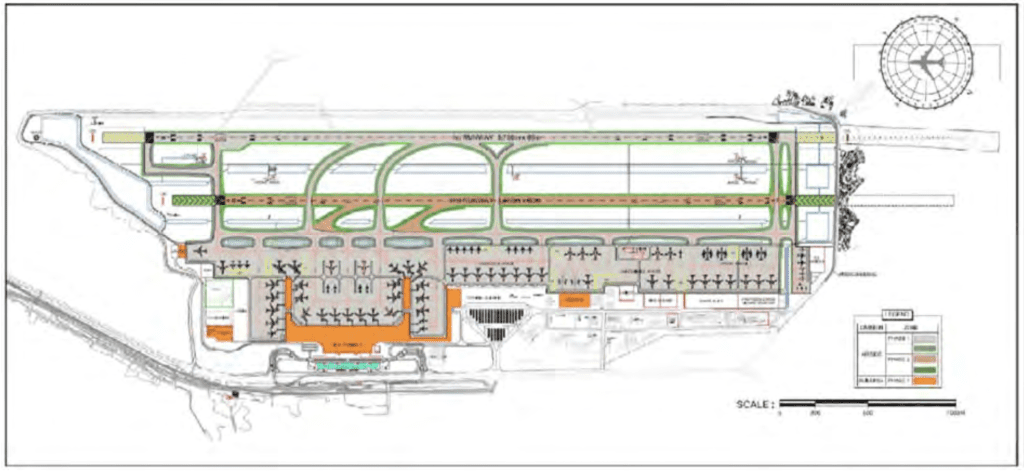
2 comments
[…] As the air traffic and cargo handling of the airport are expected to rise over the years, the 3rd terminal is pivotal for the continued expansion and modernization of the […]
[…] of Female Education in Bangladesh Bangladesh’s Airbus Deal : Potentials and Promises Terminal 3 – HSI Airport Expansion Plan Dissected Why Bangladesh’s Delta Plan 2100 Matters Exploring The Dhaka-Cox’s Bazar […]